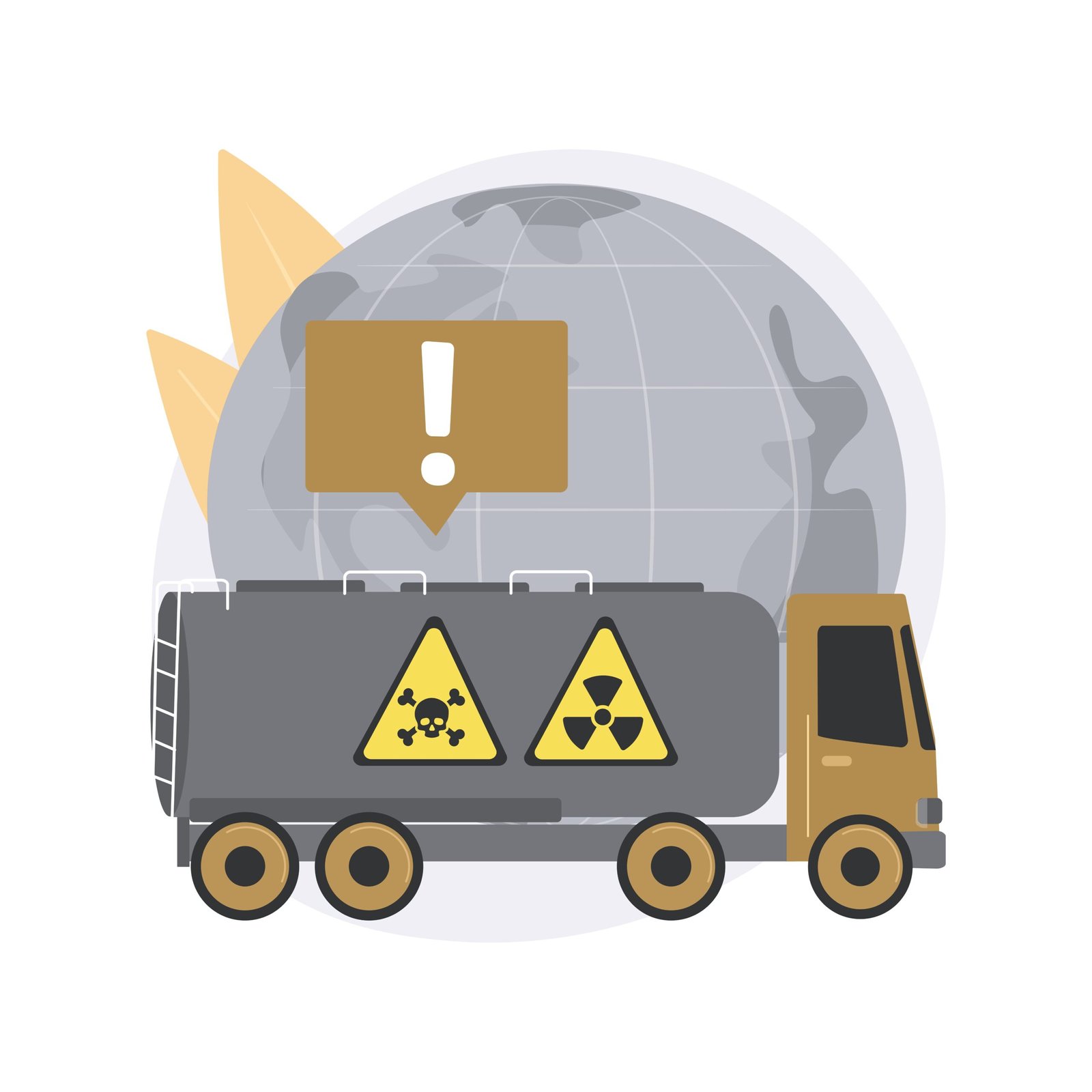What are Dangerous Goods (DG)?
Dangerous goods refer to items or materials with corrosive, infectious, toxic, flammable, or explosive properties. These goods are hazardous and can pose risks to human safety and the environment if not properly managed. Therefore, their transportation requires strict adherence to safety protocols to mitigate potential hazards.
Passengers are strictly prohibited from carrying these goods in their baggage or in the aircraft cabin. The transportation of dangerous goods is governed by various international and national regulatory laws, which dictate the safe handling, packaging, labeling, and transportation of such goods.
What Items Are Commonly Imported/Exported To and From the United States?
Here are some of the most common dangerous goods imported and exported in the United States:
Classification of Dangerous Goods (DG) in the United States
Explosives include items or materials capable of detonation or rapid conflagration due to chemical reactions. They are classified into divisions based on their hazards:
- Division 1.1: Mass explosion hazard articles and substances
- Division 1.2: Hazard articles and substances without mass explosion hazard
- Division 1.3: Articles and substances with fire hazards, with minor projection or blast hazards
- Division 1.4: Articles and substances with no significant hazard
- Division 1.5: Very sensitive substances and those with mass explosion hazards
- Division 1.6: Extremely sensitive articles with no mass explosion hazard
Examples of explosives include PETN composition, rockets, igniters, airbag inflators, and fireworks.
Gases are substances with vapor pressure above 50 degrees or 300 kPa, completely gaseous at 20 degrees and standard atmospheric pressure. They are categorized into divisions based on their properties:
- Division 2.1: Flammable gases
- Division 2.2: Non-toxic, non-flammable gases
- Division 2.3: Toxic gases
Examples of gases include ethylene, propane, methane, oxygen, and natural gas.
Flammable liquids are mixtures that produce flammable vapors at temperatures not exceeding 60 to 65 degrees. They can cause severe hazards due to their combustibility and volatility.
Examples include heating oil, turpentine, and diesel fuel.
Flammable solids are substances prone to fire through self-reactivity, friction, or spontaneous heating. They can propagate severe conflagrations and require careful handling during transportation.
- Division 4.1: Flammable solids
- Division 4.2: Substances predisposed to spontaneous combustion
- Division 4.3: Substances that emit flammable gases in contact with water
Examples of flammable solids include sodium batteries, metal powders, and sulfur.
Oxidizing substances initiate combustion by yielding oxygen, while organic peroxides can exude heat and cause rapid combustion. They pose hazards due to their instability and reactivity.
- Division 5.1: Oxidizing articles
- Division 5.2: Organic peroxides
Examples include nitrates, peroxides, and chemical oxygen generators.
Toxic substances cause severe injury or death upon contact with humans, while infectious substances contain pathogens. They require special handling to prevent health hazards.
- Division 6.1: Toxic substances
- Division 6.2: Infectious articles
Examples include clinical waste, medical specimens, and toxic chemicals.
Radioactive materials emit ionizing radiation and require special transportation due to health risks. They do not have subdivisions.
Examples include medical isotopes and enriched uranium.
Corrosives disintegrate or degrade materials upon contact, causing damage to living tissue and surrounding materials.
Examples include acids, bases, and chlorides.
Miscellaneous dangerous goods present hazards during transportation and require careful handling.
Examples include lithium metal batteries, fuel cell engines, and ammonium nitrate fertilizers.
However, many substances meet the criteria of more than one Class or Division. Thus, the primary hazard must be determined. Additionally, some dangerous goods fall into one of 3 packing groups depending on the degree of danger they present to people and equipment:
- Packing group I: Substances presenting high danger
- Packing group II: Substances presenting medium danger
- Packing group III: Substances presenting low danger.
For precise guidance and regulations regarding the classification and handling of dangerous goods in the United States, it is crucial to consult official sources such as the U.S. Department of Transportation (DOT) and the International Air Transport Association (IATA). These organizations provide comprehensive information and guidelines tailored to the specific requirements of each mode of transportation, including air, sea, and road. Additionally, referring to official documentation ensures compliance with national and international regulations, promoting safety and minimizing risks associated with the transportation of hazardous materials. For more detailed information, please visit the following references:
- U.S. Department of Transportation (DOT) Hazardous Materials Regulations (HMR)
- International Air Transport Association (IATA) Dangerous Goods Regulations (DGR)

What Sets Express Freight Management Apart From Other DG Warehouses?
Are You Aware Of The Following Regulations For Hazardous Goods For The United States?
In the United States, hazardous goods regulations are overseen by federal agencies like the Department of Transportation (DOT), the Environmental Protection Agency (EPA), and the Occupational Safety and Health Administration (OSHA). Key regulations include:
- DOT Hazardous Materials Regulations (HMR): These govern the safe transportation of hazardous materials, including packaging, labeling, and transportation modes.
- EPA Resource Conservation and Recovery Act (RCRA): Regulates hazardous waste generation, transportation, treatment, storage, and disposal.
- OSHA Hazard Communication Standard (HCS): Ensures workplace awareness of hazardous chemicals through information, training, and labeling.
- Pipeline and Hazardous Materials Safety Administration (PHMSA): Regulates hazardous materials transportation through pipelines.
Compliance with these regulations is vital to ensure safe handling and transportation of hazardous goods, avoiding fines and legal liabilities.
Express Freight Management
Express Freight Management is your one-stop shipping solutions provider. With a global reach and a commitment to customer satisfaction, we ensure smooth and efficient shipping from start to finish.
FAQs About Dangerous Goods (DG) Shipping
What Are Dangerous Goods (DG)?
Dangerous goods are items or materials that have corrosive, infectious, toxic, flammable, or explosive properties. These goods are hazardous and can pose risks to human safety and the environment if not properly managed. Their transportation requires strict adherence to safety protocols to mitigate potential hazards.
Why Is Dangerous Goods (DG) Shipping Important?
Shipping Dangerous Goods requires special handling and safety measures to ensure the protection of people, property, and the environment. Proper regulations and procedures must be followed to minimize risk.
What Is A Dangerous Goods Declaration?
A Dangerous Goods Declaration is a document that must accompany hazardous shipments. It provides essential information about the dangerous goods being shipped, including their classification, quantity, and handling instructions.
Can Dangerous Goods Be Shipped By Air?
Yes, but shipping Dangerous Goods by air has strict regulations due to the high risk of fire, explosion, or leakage. Airlines and freight companies have specific guidelines for packaging, labeling, and documentation for air transport.





